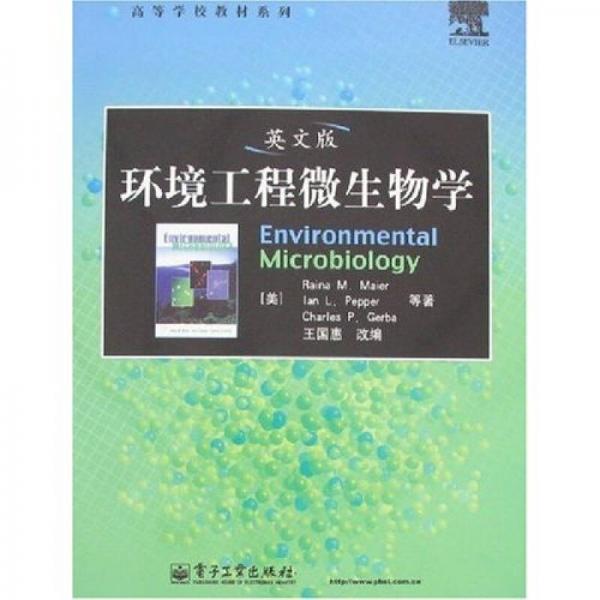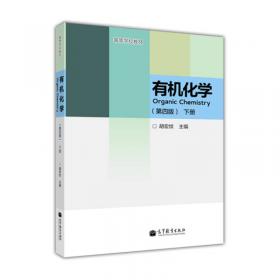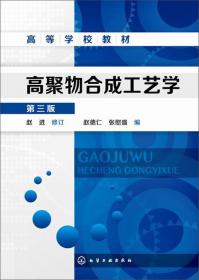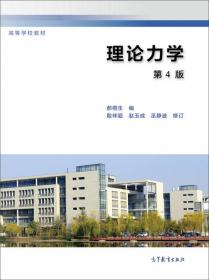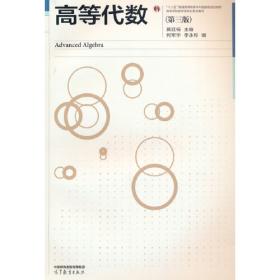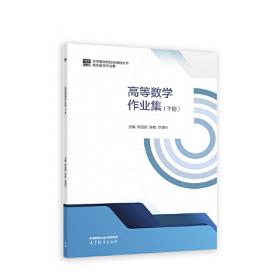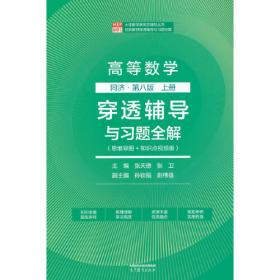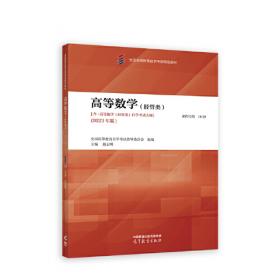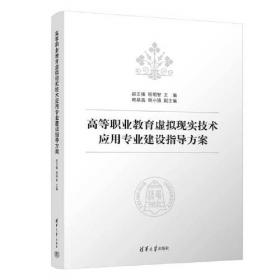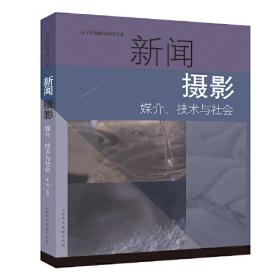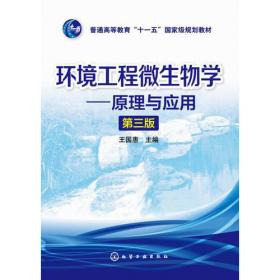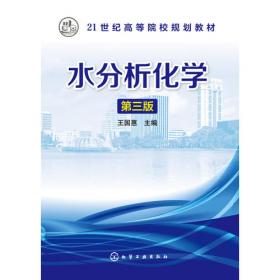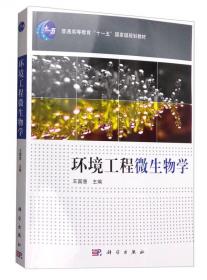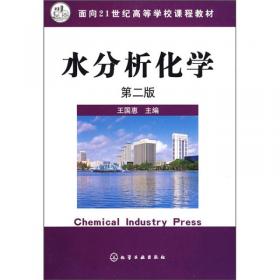高等学校教材系列:英文版环境工程微生物学
出版时间:
2008-01
版次:
1
ISBN:
9787121054471
定价:
49.00
装帧:
平装
开本:
16开
纸张:
胶版纸
页数:
361页
字数:
774千字
正文语种:
英语
9人买过
-
既阐明了环境工程微生物学的基本原理,又介绍了微生物在修复污染环境,处理污水、废水等方面的应用。《英文版环境工程微生物学》包括基础知识,更注重新理论和新技术,内容丰富、图文并茂,系统详实。全书共15章,主要内容包括:简述了微生物学的基础知识,环境微生物的种类、形态、生理、遗传及其生长特征;分别介绍了微生物在土壤、水体以及大气中的生态分布,微生物与其生态环境的相互关系;系统地介绍了微生物在环境中的行为、活性以及研究其生态分布、数量、活性的新技术和新方法;较系统地论述了微生物在生态系统中的作用与功能及开发、强化生态功能进行污染环境的修复、废水和废弃物的处理等原理。 Chapter1IntroductiontoEnvironmentalMicrobiology
1.1Introduction
1.2AnHistoricalPerspective
1.3ModemEnvironmentalMicrobiology
1.4PurposeandOrganizationofThisText
Chapter2MicroorganismsintheEnvironment
2.1Viruses
2.2Bacteria
2.3Fungi
2.4Algae
2.5Protozoa
Chapter3BacterialGrowth
3.1GrowthinPureCultureinaFlask
3.2ContinuousCulture
3.3GrowthunderAerobicConditions
3.4GrowthunderAnaerobicConditions
3.5GrowthintheEnvironment
Chapter4TerrestrialEnvironments
4.1Introduction
4.2PorousMedia
4.3SoilandSubsurfaceEnvironments
4.4GeneralCharacteristicsofMicroorganismsinPorousMedia
4.5MicrobialActivitiesinPorousMedia
4.6MicroorganismsinSurfaceSoils
4.7MicroorganismsinShallowSubsurfaceEnvironments
4.8MicroorganismsinDeepSubsurfaceEnvironments
Chapter5AquaticandExtremeEnvironments
5.1Introduction
5.2MicrobialHabitatsintheAquaticEnvironment
5.3AquaticEnvironments
5.4EnvironmentalDeterminantsThatGovernExtremeEnvironments
5.5AquaticMicrobesintheNews
Chapter6Aeromicrobiology
6.1Introduction
6.2ImportantAirbornePathogens
6.3ImportantAirborneToxins
6.4NatureofBioaerosols
6.5TheAtmosphere
6.6AeromicrobiologicalPathway
6.7SamplingDevicesfortheCollectionofBioaerosols
6.8MicrobialSurvivalintheAir
6.9ExtramuralAeromicrobiology
6.10IntramuralAeromicrobiology
6.11BioaerosolControl
6.12BiosafetyintheLaboratory
6.13OtherAreasofInterest
Chapter7MicrobialTransport
7.1Introduction
7.2FactorsAffectingMicrobialTransport
7.3FactorsAffectingTransportofDNA
7.4NovelApproachestoFacilitateMicrobialTransport
7.5MethodologyforStudyingTransport
7.6ModelsforMicrobialTransport
Chapter8CulturalMethods
8.1CulturalMethodsforEnumerationofBacteria
8.2CulturalMediaforBacteria
8.3CulturalMethodsforFungi
8.4CulturalMethodsforAlgaeandCyanobacteria
8.5CellCulture-BasedDetectionMethodsforViruses
Chapter9BiogeoehemiealCycling
9.1Introduction
9.2CarbonCycle
9.3NitrogenCycle
9.4SulfurCycle
Chapter10MicroorganismsandOrganicPollutants
10.1Introduction
10.2EnvironmentalLaw
10.3TheOverallProcessofBiodegradation
10.4RelationshipbetweenContaminantStructure,Toxicity,andBiodegradability
10.5EnvironmentalFactorsAffectingBiodegradation
10.6BiodegradationofOrganicPollutants
10.7Bioremediation
Chapter11MicroorganismsandMetalPollutants
11.1CauseforConcern
11.2MetalsDefined
11.3SourcesofMetals
11.4MetalBioavailabilityintheEnvironment
11.5MetalToxicityEffectsontheMicrobialCell
11.6MechanismsofMicrobialMetalResistanceandDetoxification
11.7MethodsforStudyingMetal-MicrobialInteractions
11.8AdverseEffectsofMicrobialMetalTransformations
11.9TheBenefitsofMetal-MicrobialInteractions
11.10Physical/ChemicalMethodsofMetalRemediation
11.11InnovativeMicrobialApproachesintheRemediationofMetal-ContaminatedSoilsandSediments
11.12InnovativeMicrobialApproachesintheRemediationofMetal-ContaminatedAquaticSystems
Chapter12IndicatorMicroorganisms
12.1TheConceptofIndicatorOrganisms
12.2TotalColiforms
12.3FecalColiforms
12.4FecalStreptococci
12.5Clostridiumperfringens
12.6HeterotrophicPlateCount
12.7Bacteriophage
12.8OtherIndicatorOrganisms
12.9StandardsandCriteriaforIndicators
Chapter13NucleicAcid-BasedMethodsofAnalysis
13.1StructureandComplementarityofNucleicAcids
13.2ObtainingMicrobialNucleicAcidsfromtheEnvironment
13.3NucleicAcid-BasedMethods
Chapter14DomesticWastesandWasteTreatment
14.1DomesticWastewater
14.2ModemWastewaterTreatment
14.3OxidationPonds
14.4SepticTanks
14.5LandApplicationofWastewater
14.6WetlandsandAquacultureSystems
14.7SolidWaste
Chapter15DrinkingWaterTreatmentandDistribution
15.1WaterTreatmentProcesses
15.2WaterDistributionSystems
15.3AssimilableOrganicCarbon
-
内容简介:
既阐明了环境工程微生物学的基本原理,又介绍了微生物在修复污染环境,处理污水、废水等方面的应用。《英文版环境工程微生物学》包括基础知识,更注重新理论和新技术,内容丰富、图文并茂,系统详实。全书共15章,主要内容包括:简述了微生物学的基础知识,环境微生物的种类、形态、生理、遗传及其生长特征;分别介绍了微生物在土壤、水体以及大气中的生态分布,微生物与其生态环境的相互关系;系统地介绍了微生物在环境中的行为、活性以及研究其生态分布、数量、活性的新技术和新方法;较系统地论述了微生物在生态系统中的作用与功能及开发、强化生态功能进行污染环境的修复、废水和废弃物的处理等原理。
-
目录:
Chapter1IntroductiontoEnvironmentalMicrobiology
1.1Introduction
1.2AnHistoricalPerspective
1.3ModemEnvironmentalMicrobiology
1.4PurposeandOrganizationofThisText
Chapter2MicroorganismsintheEnvironment
2.1Viruses
2.2Bacteria
2.3Fungi
2.4Algae
2.5Protozoa
Chapter3BacterialGrowth
3.1GrowthinPureCultureinaFlask
3.2ContinuousCulture
3.3GrowthunderAerobicConditions
3.4GrowthunderAnaerobicConditions
3.5GrowthintheEnvironment
Chapter4TerrestrialEnvironments
4.1Introduction
4.2PorousMedia
4.3SoilandSubsurfaceEnvironments
4.4GeneralCharacteristicsofMicroorganismsinPorousMedia
4.5MicrobialActivitiesinPorousMedia
4.6MicroorganismsinSurfaceSoils
4.7MicroorganismsinShallowSubsurfaceEnvironments
4.8MicroorganismsinDeepSubsurfaceEnvironments
Chapter5AquaticandExtremeEnvironments
5.1Introduction
5.2MicrobialHabitatsintheAquaticEnvironment
5.3AquaticEnvironments
5.4EnvironmentalDeterminantsThatGovernExtremeEnvironments
5.5AquaticMicrobesintheNews
Chapter6Aeromicrobiology
6.1Introduction
6.2ImportantAirbornePathogens
6.3ImportantAirborneToxins
6.4NatureofBioaerosols
6.5TheAtmosphere
6.6AeromicrobiologicalPathway
6.7SamplingDevicesfortheCollectionofBioaerosols
6.8MicrobialSurvivalintheAir
6.9ExtramuralAeromicrobiology
6.10IntramuralAeromicrobiology
6.11BioaerosolControl
6.12BiosafetyintheLaboratory
6.13OtherAreasofInterest
Chapter7MicrobialTransport
7.1Introduction
7.2FactorsAffectingMicrobialTransport
7.3FactorsAffectingTransportofDNA
7.4NovelApproachestoFacilitateMicrobialTransport
7.5MethodologyforStudyingTransport
7.6ModelsforMicrobialTransport
Chapter8CulturalMethods
8.1CulturalMethodsforEnumerationofBacteria
8.2CulturalMediaforBacteria
8.3CulturalMethodsforFungi
8.4CulturalMethodsforAlgaeandCyanobacteria
8.5CellCulture-BasedDetectionMethodsforViruses
Chapter9BiogeoehemiealCycling
9.1Introduction
9.2CarbonCycle
9.3NitrogenCycle
9.4SulfurCycle
Chapter10MicroorganismsandOrganicPollutants
10.1Introduction
10.2EnvironmentalLaw
10.3TheOverallProcessofBiodegradation
10.4RelationshipbetweenContaminantStructure,Toxicity,andBiodegradability
10.5EnvironmentalFactorsAffectingBiodegradation
10.6BiodegradationofOrganicPollutants
10.7Bioremediation
Chapter11MicroorganismsandMetalPollutants
11.1CauseforConcern
11.2MetalsDefined
11.3SourcesofMetals
11.4MetalBioavailabilityintheEnvironment
11.5MetalToxicityEffectsontheMicrobialCell
11.6MechanismsofMicrobialMetalResistanceandDetoxification
11.7MethodsforStudyingMetal-MicrobialInteractions
11.8AdverseEffectsofMicrobialMetalTransformations
11.9TheBenefitsofMetal-MicrobialInteractions
11.10Physical/ChemicalMethodsofMetalRemediation
11.11InnovativeMicrobialApproachesintheRemediationofMetal-ContaminatedSoilsandSediments
11.12InnovativeMicrobialApproachesintheRemediationofMetal-ContaminatedAquaticSystems
Chapter12IndicatorMicroorganisms
12.1TheConceptofIndicatorOrganisms
12.2TotalColiforms
12.3FecalColiforms
12.4FecalStreptococci
12.5Clostridiumperfringens
12.6HeterotrophicPlateCount
12.7Bacteriophage
12.8OtherIndicatorOrganisms
12.9StandardsandCriteriaforIndicators
Chapter13NucleicAcid-BasedMethodsofAnalysis
13.1StructureandComplementarityofNucleicAcids
13.2ObtainingMicrobialNucleicAcidsfromtheEnvironment
13.3NucleicAcid-BasedMethods
Chapter14DomesticWastesandWasteTreatment
14.1DomesticWastewater
14.2ModemWastewaterTreatment
14.3OxidationPonds
14.4SepticTanks
14.5LandApplicationofWastewater
14.6WetlandsandAquacultureSystems
14.7SolidWaste
Chapter15DrinkingWaterTreatmentandDistribution
15.1WaterTreatmentProcesses
15.2WaterDistributionSystems
15.3AssimilableOrganicCarbon
查看详情
-
八五品
重庆市九龙坡区
平均发货9小时
成功完成率96.3%
-
八五品
重庆市九龙坡区
平均发货9小时
成功完成率82.23%
-
八五品
江苏省南京市
平均发货13小时
成功完成率88.33%
-
八五品
广东省东莞市
平均发货11小时
成功完成率90.6%
-
 7
7
八五品
北京市昌平区
平均发货7小时
成功完成率98.35%
-
 5
5
九品
北京市昌平区
平均发货6小时
成功完成率96.43%
-
 26
26
2008-01 印刷
印次: 1
八五品
湖南省株洲市
平均发货6小时
成功完成率97.14%
-
八五品
湖北省咸宁市
平均发货10小时
成功完成率91.12%
-
九五品
广东省韶关市
平均发货20小时
成功完成率79.29%
-
 4
4
九品
江苏省南京市
平均发货6小时
成功完成率94.51%
-
九五品
山东省枣庄市
平均发货12小时
成功完成率78.3%

 占位居中
占位居中

